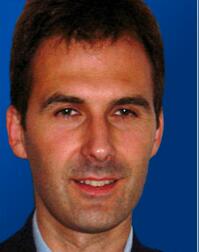Abstract—Continuing proliferation of wireless devices
exposes humanity to the reality of the twin challenge posed by
finite frequency spectrum and almost infinite demand for the
same frequency spectrum, necessitating the need for more
ingenious spectrum management techniques. The band 2.4-2.7
GHz was originally created and classified for ISM, 3G, UMTS
and WiMAX systems. It has become a frequency band which is
generally used by end users due to the fact that it’s inexpensive,
easy to deploy and enhances frequency re-use. Quite a few
measurements have been carried out in countries like France,
Germany, India, Romania, UK and USA. This paper presents a
study of an outdoor measurement on spectrum occupancy in
both rural and urban areas in Kwara State, Nigeria, spanning
across the frequency range of 2.4 GHz – 2.7 GHz. The results
show that the band being investigated is immensely
underutilized with upper and lower occupancy values of 22.56%
and 0% in urban and rural environments. These results were
compared to other measurements conducted globally in this
band or closely aligned bands.
Index Terms—ISM band, spectrum occupancy, spectrum
utilization, UMTS network.
A. A. Ayeni, N. Faruk, O. A. Sowande, S. O. Onidare, and M.Y. Mujahd
are with the Department of Telecommunication Science, University of Ilorin,
Nigeria (e-mail: aayeni@unilorin.edu.ng, faruk.n@unilorin.edu.ng,
sowande.oa@unilorin.edu.ng, onidare.so@unilorin.edu.ng,
mujahid.my@unilorin.edu.ng).
O.W. Bello is with the Department of Information and Communication
Science, University of Ilorin, Nigeria (e-mail: laibello@unilorin.edu.ng).
[PDF]
Cite: Adeseko A. Ayeni, Nasir Faruk, Olayiwola W. Bello, Olugbenga A. Sowande, Samuel O. Onidare, and Mujahid. Y. Muhammad, "Spectrum Occupancy Measurements and Analysis in the 2.4-2.7 GHz Band in Urban and Rural Environments," International Journal of Future Computer and Communication vol. 5, no. 3, pp. 142-147, 2016.


